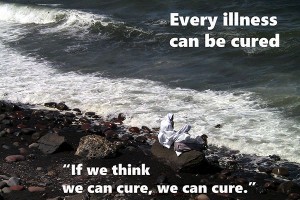 Modern medicine views most diseases as incurable. Incurable diseases range from challenging diseases like MS, HIV and polio, to the common cold and influenza, as well as damage and disability like macular degeneration and type 1 diabetes, and trivial physical problems like plantar facsciitis. There are many ways for a disease to be incurable.
Modern medicine views most diseases as incurable. Incurable diseases range from challenging diseases like MS, HIV and polio, to the common cold and influenza, as well as damage and disability like macular degeneration and type 1 diabetes, and trivial physical problems like plantar facsciitis. There are many ways for a disease to be incurable.
Some claims of incurable are direct – MS, HIV and polio are designated as incurable because there is “no known medical cure“. A cure might be found in the future, which would convert them to curable diseases. Today, they are viewed as incurable.
Some diseases, like the common cold, measles, and influenza cannot be cured in medical theory, even thought they are usually cured in reality. They are cured by health. But, because there is no medicine that can cure them, they are considered incurable. These diseases are called ‘self limited’ on the theory that the resolve themselves naturally. They are not actually “self-limited“, our health cures them, in most cases, in a fairly short time – faster than any medicine. Healthier people cure get fewer colds, and cure them faster.
Medicine also makes the mistake of naming some disabilities, like Type 1 Diabetes, and the damage due to macular degeneration as incurable diseases. Although no one would claim that an amputated limb is an incurable disease, when your islet cells are all gone – it’s designated an incurable disease. These are disabilities, not illnesses and although they might someday be repaired and healed, they cannot be cured. This confusion can lead to giving up, to cure ignorance, for the ongoing nature of diseases like macular degeneration, as if we do not know the cause.
Some diseases that are designated as incurable indirectly. If you have a parasitic infection, there is a test for cured, an ability to prove that a cure has been accomplished. But, there are no tests for cured for any disease not caused by a parasite. When there is no test for ‘cured’, modern medicine does not use the word ‘cure’. If you have scurvy, obesity, arthritis, hypertension, cancer, or many other diseases not caused by a parasite – there are no cures, because there is no test for ‘cured’. It might surprise you to learn that the three major medical reference texts: MERCK, Lange’s, and Harrison’s do not use the word ‘cure’ for scurvy. Not only that, as a result of this cure ignorance, two of the three recommend a ‘treatment’ that cannot possibly ‘cure’ scurvy.
Finally, some diseases are seen to be incurable simply because the disease name covers a broad area, impossible to cure every case. Cancer and arthritis are diseases with many variations with many types and many different causes. It is not possible to cure cancer, even if it is possible to cure a specific case of a cancer. As a result, when a case of cancer is cured, it is generally ignored, it disappears from view.
Alexander’s Nursing Practice advises that “A useful distinction can be drawn between ‘illness’ and ‘disease’. An ‘illness’ is what the patient experiences; a ‘disease’ is a description of a pathological abnormality, made from the clinician’s point of view.” A more succinct version of this is to say that “a patient goes to a doctor with an illness, and comes away with a disease“, except that sometimes, there is no diagnosis, therefore no disease.
The word disease is a gray area – covering many different types of medical conditions, most of which simply cannot be cured by definition. No disease can be cured, only a specific case, an illness, can be cured.
How can we know if an illness is curable, or incurable? Only by curing it. It is not possible to prove than an illness is incurable.
Every illness can be cured – the Healthicine Creed. In healthicine, an illness is an active condition with an active cause. It is cured by addressing the cause.
This post was written as part of an exploration of the concept of cure which culminated it publication of the book The Elements of Cure and the paper A Theory of Cure.
to your health, tracy


